The choice between smart trainers and rollers can substantially affect your training experience. Indoor training has become the norm, and many coaches want their athletes to ride intervals indoors. This eliminates variables that outdoor riding introduces. So which setup should you invest in?
Smart trainers clamp your bike into a static stand and come in two varieties: wheel-on and direct-drive models. These trainers provide better stability and resistance levels that make them perfect for high-power sprint workouts. The numbers speak for themselves - about 80% of Zwift users do their sessions on smart trainers. Roller-style bike trainers work differently. Simple cylinders fitted into a frame let you cycle on your bike without clamping it down. This creates a more natural road feel and helps improve your balance and pedalling technique.
Your indoor training choice depends on your goals. Smart trainers paired with virtual platforms like Zwift automatically adjust resistance to simulate terrain changes. Most rollers are basic but work well with training apps if your bike has speed and cadence sensors. Let's explore the key differences between these two indoor training options to help you pick what works best for your cycling goals and budget.
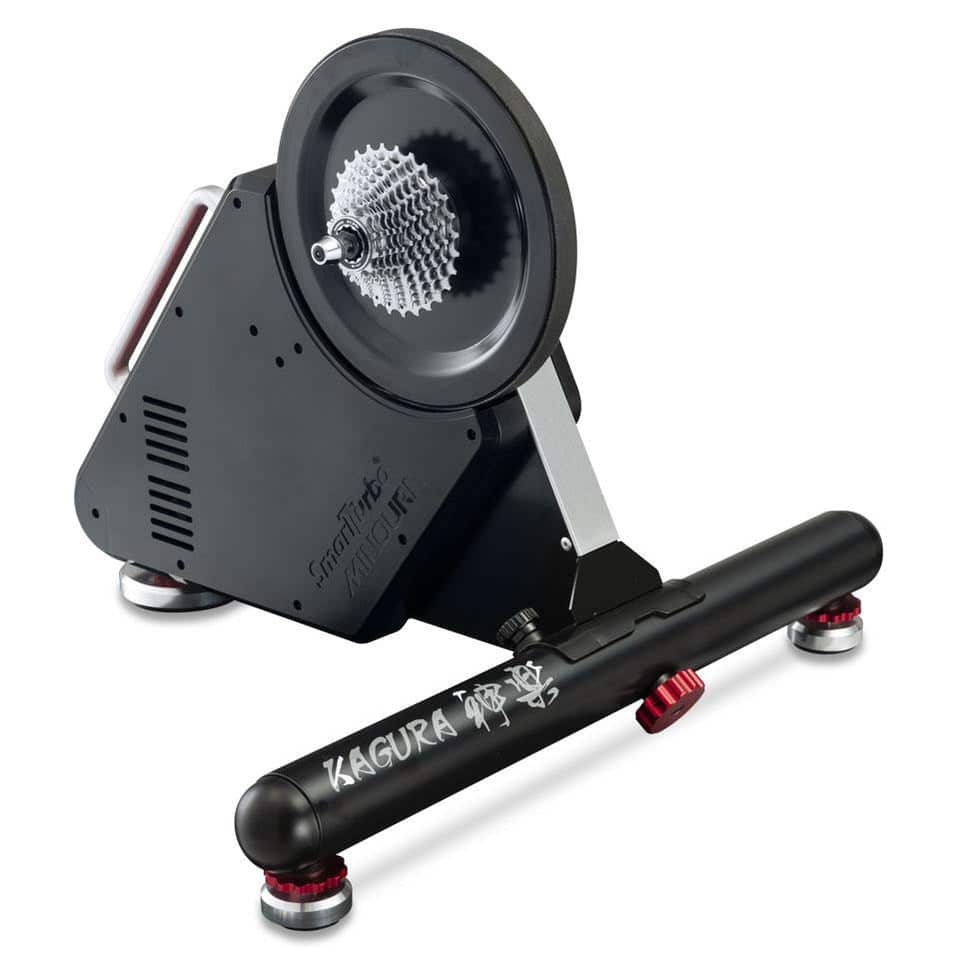
Smart trainers and rollers take different paths to indoor cycling. You'll need to understand what makes them different to pick the right equipment that matches your training goals.
Smart trainers keep your bike locked in place, which gives you a solid platform to ride on. Your rear wheel connects to a resistance unit in wheel-on trainers. Direct-drive models need you to remove the rear wheel and attach your bike frame right to the trainer. This setup makes smart trainers really stable whether you're sitting or standing.
Rollers work differently - they have three cylindrical drums that your bike sits on freely. Nothing holds your bike in place, so you must keep your balance as you ride. This gives you a real-life road feel since your bike moves naturally under you. The free movement means you need to stay focused on rollers, even during easy recovery rides.
Smart trainers are ready to use right away - just attach your bike and start pedalling. You won't need time to learn how to use them. This lets you focus on your workout intensity instead of trying to stay upright. Beginners love them, and they're great when you want quick, effective workouts.
Rollers take time to master. Most cyclists start by placing themselves between doorframes to avoid falling during their first few rides. While it's tough at first, this learning process helps you develop better balance and handling skills that help when riding outside. Regular roller users often say their bike handling improves a lot.
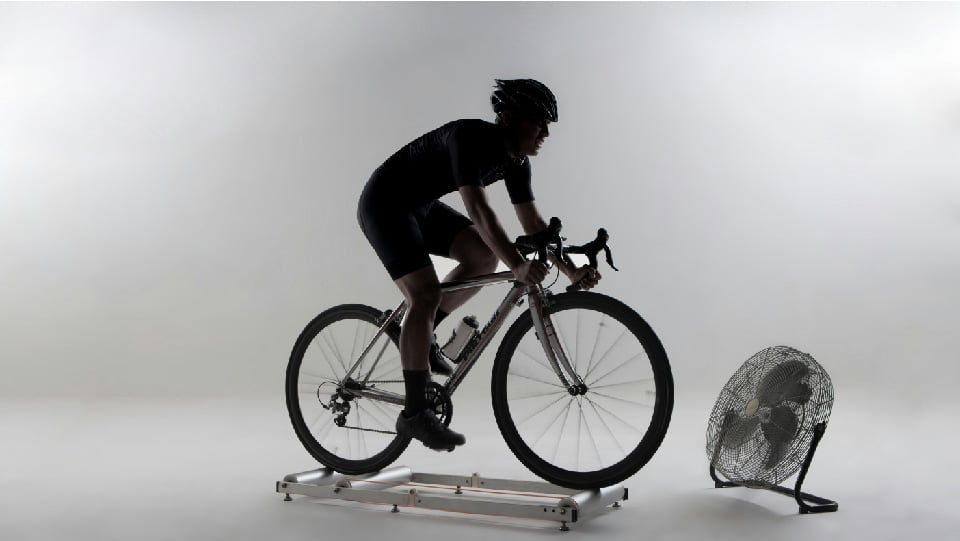
Smart trainers shine when it comes to structured, intense workouts. They're stable enough for maximum efforts while sitting or standing, and premium models can handle over 2000 watts of resistance. This makes them perfect when you want precise control over power-based interval training.
Rollers help you work on your technique. If your pedalling isn't smooth, you'll feel it right away - rough pedalling makes you bounce on the rollers. This quick feedback helps you develop a smoother, more efficient pedal stroke. Your core muscles stay engaged throughout the ride because you need to balance, which gives you a complete workout beyond just leg strength.
Each system has its strengths - smart trainers give you stability and power control, while rollers help with technique and road feel.
Indoor training setups each have their own performance advantages based on your training goals. You can pick the right equipment by knowing these differences and matching them to your workout needs.
Smart trainers clearly beat rollers for intense, high-power sessions. Athletes can stand and push with full power during sprints thanks to the trainer's stability. The variable resistance from smart trainers helps build strength and power effectively. Riders who want to practice maximum sprint efforts will do better with a trainer's solid platform. Smart trainers with built-in resistance units can also connect to cycling apps and create real-life climbing simulations that make indoor workouts feel authentic.
Rollers work best for long, steady rides. Many cyclists find rollers are great for recovery rides because they naturally keep the intensity lower. Recovery rides should feel "ridiculously easy" at 60% of max heart rate or 55% of functional threshold power. Rollers keep your mind and body active even during light efforts, and time seems to pass faster than on stationary trainers.
Rollers truly shine at improving pedalling efficiency. Trainers might let you get away with bad form, but rollers quickly show any flaws in your pedalling—rough or uneven strokes will make you bounce noticeably. This direct feedback helps riders develop smoother pedalling naturally. Research suggests that roller training might give better performance benefits than trainers, even at similar heart rates.
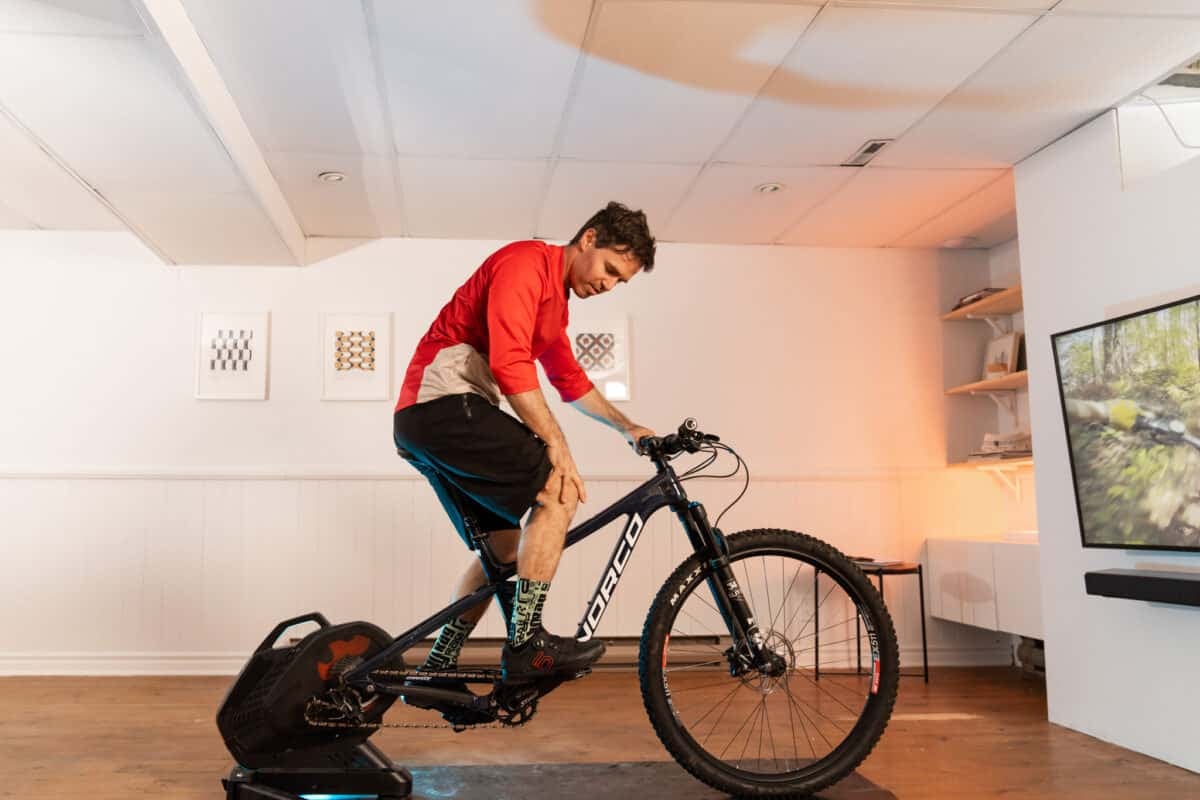
Technology sets smart trainers apart from traditional rollers in several important ways.
Smart trainers can adjust resistance automatically to match virtual terrain or workout needs. These trainers generate up to 2,000 watts of resistance and simulate gradients up to 20%. Their models measure speed, cadence, and power without external sensors.
Traditional rollers provide consistent resistance without electronic control.
Smart trainers are the choice of about 80% of Zwift users. These trainers merge naturally with major platforms like Zwift, TrainerRoad, and Wahoo X (formerly SYSTM) and create immersive virtual riding experiences.
Rollers need additional sensors to work with apps. All the same, smart rollers now support virtual shifting and training platforms when users connect them with power meters.
Smart trainers employ dual-band ANT+ FE-C and Bluetooth connectivity. This wireless communication makes ERG mode possible—a feature that keeps target power steady whatever the cadence.
Bluetooth connections are stronger and more stable but only allow one-to-one device pairing. ANT+ supports multiple device connections at once. Advanced users can run platforms like Zwift and TrainerRoad together with dual ANT+ sticks.
Your living situation plays a big role in choosing the right indoor cycling system.
Noise becomes a crucial factor, especially when you live in an apartment. Smart trainers make different levels of noise—from 61dB (like a normal conversation) to 85dB (like a diesel truck at 40mph). Direct-drive models run quieter than wheel-on versions naturally. Your bike's drivetrain adds its own noise too, no matter which trainer you pick. The quietest setups get louder once you add a cooling fan, which puts out about 71dB by itself.
Most trainers come with folding legs to save space. Smart trainers can weigh quite a bit (over 45 pounds), so moving them around isn't easy despite their carrying handles. Rollers tend to weigh less and fit under a bed nicely, but they're a bit more awkward to move around.
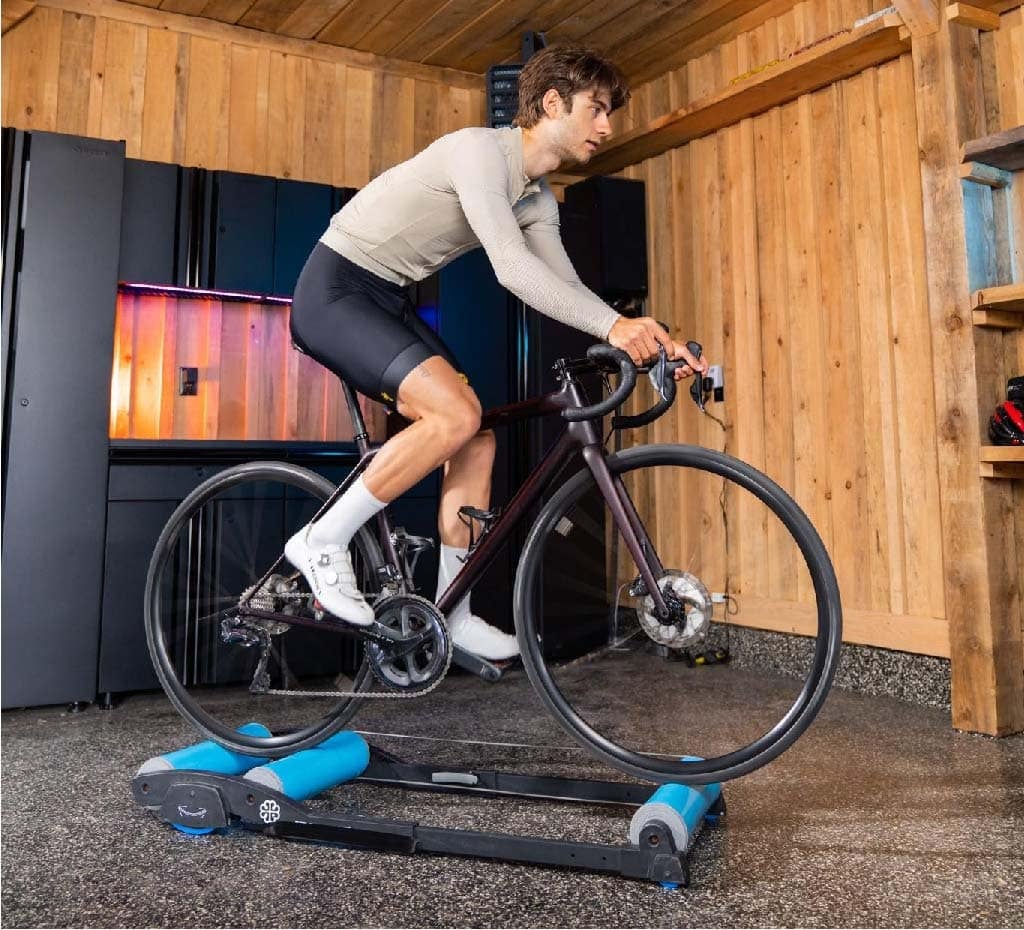
Bike attachment systems vary by a lot. Standard quick-release (QR) skewers (130mm road, 135mm MTB spacing) blend well with most trainers. Modern bikes with thru-axles (usually 142x12mm or 148x12mm) often need specific adaptors. Direct-drive trainers now include these adaptors, but wheel-on trainers usually make you buy them separately. Make sure the thread pitches match your bike frame's specs when buying adaptors.
| Feature | Smart Trainers | Rollers |
|---|---|---|
| Setup Type | Fixed frame where bike clamps in place | Three cylindrical drums with free-floating bike |
| Stability | Highly stable for seated and standing workouts | Needs active balancing throughout workout |
| Learning Curve | Easy to use; works right out of the box | Takes time to learn; needs practice period |
| Maximum Resistance | Up to 2,000+ watts | Up to 1,100-1,500 watts (smart rollers) |
| Training Focus | Power-based intervals, structured workouts | Better technique, smoother pedalling |
| Sprint Capability | Perfect for high-power sprints | Limited because of balance needs |
| App Integration | Works directly with training platforms | Needs extra sensors to work with apps |
| Resistance Control | Auto resistance changes, ERG mode support | Steady resistance (except smart rollers) |
| Connectivity | Dual-band ANT+ FE-C and Bluetooth | Depends on model |
| Noise Level | 61-85 dB | Not listed |
| Weight/Portability | Heavy (45+ pounds) | Light and easy to move |
| Storage | Folds for storage | Fits under bed, saves space |
| Market Usage | ~80% of Zwift users | Not specified |
| Bike Compatibility | Needs specific adaptors for different axles | Works with most bikes as-is |
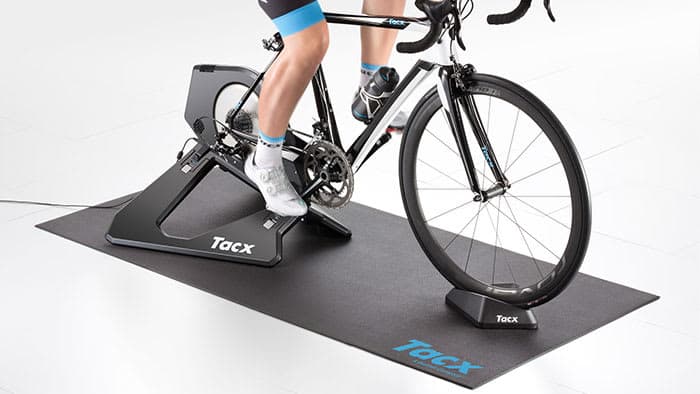
Smart trainers and rollers each have their own strengths, and your choice really comes down to your training goals and home setup. Smart trainers shine at delivering structured power workouts with exact resistance control - perfect for serious interval training. You can go all-out while seated or standing, and their app integration creates an immersive virtual ride.
Rollers are a great way to get different benefits that many cyclists love. They help you develop smoother pedalling, better balance, and feel more like real road riding. They're lighter and take up less space, which makes them a better fit for smaller homes.
Think over what you want to achieve in your training. People who focus on building raw power or following structured workouts usually go with smart trainers. Cyclists who want to work on their technique or keep their skills sharp in the off-season might find rollers more useful. Some riders even keep both, using smart trainers for intense intervals and rollers when they want to focus on technique or recovery rides.
The tech keeps evolving and the gap between these systems gets smaller. Smart rollers now come with controlled resistance and app features, but traditional smart trainers still rule platforms like Zwift. Whatever system you pick, both options give you ways to train indoors without worrying about weather while building your cycling fitness.
Your perfect indoor setup should match what matters most to you - chasing Zwift achievements, getting better pedalling form, or staying fit through winter. Smart trainers and rollers are both solid investments for your cycling trip ahead.
Smart trainer: your bike is fixed in place with controllable resistance and app connectivity (e.g., ERG mode, simulated gradients).
Rollers: your bike sits freely on drums, so you balance as you ride. They emphasize technique, cadence smoothness, and a natural road feel.
A smart trainer is far more beginner-friendly because it holds the bike upright. Rollers have a learning curve: you’ll need some practice to balance safely, especially at low speed.
You can, but it’s harder. Because you must maintain balance, all-out sprints are riskier on rollers. Smart trainers handle standing efforts and high wattage more securely.
Yes, usually with added sensors (speed/cadence or power). Traditional rollers don’t control resistance automatically. Some “smart rollers” now add resistance control for full app integration.
Direct-drive smart trainers are typically the quietest. Rollers are generally quieter than wheel-on trainers, but overall noise also depends on your drivetrain condition and pedaling smoothness.
Rollers are simpler, lighter, and often slide under a bed. Smart trainers are heavier (though many fold), so they take a bit more effort to move and store.
Often yes. Many smart trainers include or offer adapter kits (e.g., 12 mm thru-axle). Check your trainer’s spec for supported axle standards and cassette compatibility.
Absolutely. Use the smart trainer for structured intervals, ERG, and virtual climbs; use rollers for technique, balance, leg speed, and recovery spins. They complement each other well.
If you prioritize structured workouts, power control, and virtual riding, choose a smart trainer. If you want to polish form, balance, and cadence, rollers are excellent. Many riders switch depending on the workout.
